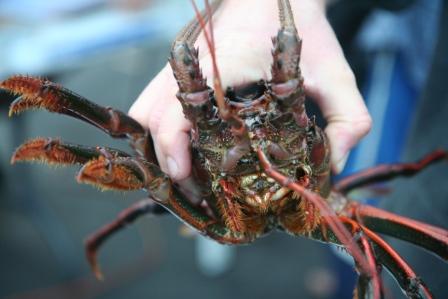
A California spiny lobster's mouth
Everyone has their role to play and the California spiny lobster is no exception. And since sea otter’s were hunted to local extinction along California’s southern coast in the late 1800’s, the spiny lobster’s role has become even more important.
Anytime a top predator is removed from an ecosystem there are consequences. The sea otter filled a crucial role as a top predator of sea urchins. Now the only animals left to dine on sea urchins are the California spiny lobster and the sheephead (a type of fish). Large sheephead fish have teeth that easily crush sea urchin shells, while spiny lobsters have strong mandibles that serve as teeth also capable of munching and crunching sea urchins.
And why does any of this matter? Because sea urchins eat kelp and without top predators to keep the sea urchin population in check, they flourish and decimate kelp forests. Scientists estimate that 75 percent of the kelp forests that used to blanket the ocean floor along California’s mainland are gone. Losing a section of kelp forest is very similar to cutting trees and losing forest areas on land. Both serve as important habitat to hundreds of animals. An estimated 800 marine species rely on the kelp forest for some part of their lifecycle.
California spiny lobsters and sheephead must patrol and control the urchin populations on their own, a tough job but somebody has to do it.
I’m very much interested in the role that lobsters play, and am aware of the choas that urchins can cause, but was unaware that lobsters helped to deal with them. Hopefully the otters might come back eventually, but I am glad the Lobsters and sheephead are able to do something to help out.